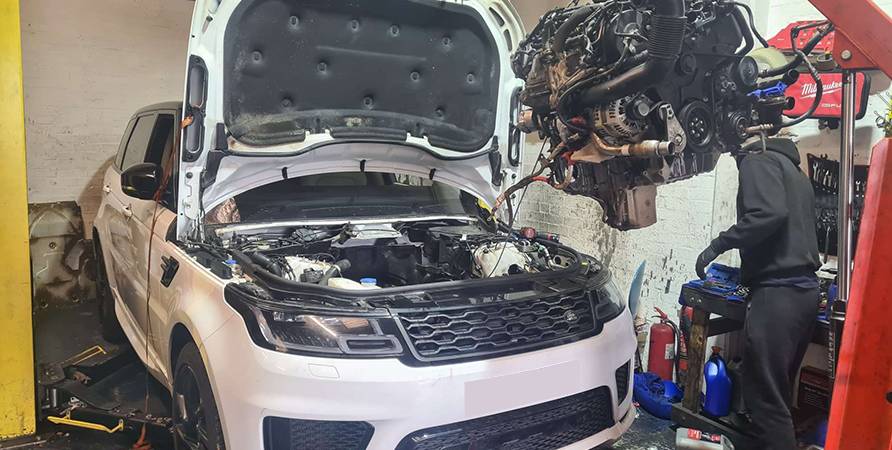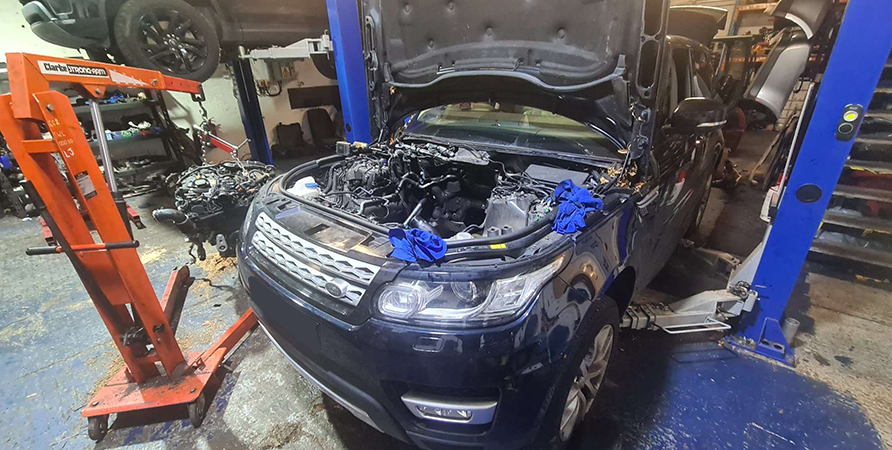
The British winter can be tough on any car. The frost on the windscreen and the chill in the air are signs that we need to take extra care of our vehicles. This is especially true for powerful and complex vehicles. If you own a used Range Rover Sport, you understand the quality and performance they offers. To keep that performance at its peak, a little bit of winter preparation goes a long, long way. The cold can be particularly hard on a Range Rover Sport Engine, putting extra strain on its components during a cold start. Looking after it properly means you can rely on it to start first time, every time, no matter how low the temperature drops. This guide is here to help you with simple, practical steps. We will focus on the heart of your vehicle, providing tips to protect all types of Range Rover Engines from the harshness of the cold, ensuring your vehicle remains a pleasure to drive throughout the winter months.
When you get in your car on a cold morning, you probably want to start the engine and rev it straight away to get the heater going. However, this is one of the harshest things you can do to your engine.
When your Range Rover Sport sits overnight in the cold, the engine oil also becomes cold and viscous, which means it gets thicker. This thick oil doesn’t flow as easily as it does when warm. As soon as you start the engine, the oil pump has the difficult job of pushing this thick fluid through all the narrow passages inside the engine. This process is vital to lubricate all the moving parts and protect them from wear. Revving the engine too soon puts stress on these components before they have received the lubrication they need.
This process doesn’t happen instantly. Depending on how much pressure the machine has on it and how the cycle of an engine works, it can take a few seconds (20-30) or a minute possible for the oil to get to every vital part. If you rev the engine or drive immediately, you’re making bits of the car move at high speed without oil. This, in and of itself, leads to premature wear and tear. Start the engine and just let it idle for a minute? You don’t have to wait an eternity, just about as long as it takes for the oil pressure to build up and for the lube to circulate. This small act of patience is a tremendous favour to your engine and will help it live a longer life.
Your car battery does even worse in the winter. The fuel-producing bugs thrive in cold weather and are chilled by low temperatures just like a battery loses power. Meantime, it takes a good deal more power to turn over and start a frigid engine. You can see the issue here: Your best friend is your weakest battery, just when your engine is such a glutton for juice. The Range Rover Sport, especially a pre-owned one, comes with a lot of electronics that consume power, and you can never have a healthy battery. On the first frosty morning, a battery that works fine in the summer might suddenly fail.
It’s a smart idea to have your battery checked before winter really hits. Most garages will provide this service for free. They can confirm for you whether it’s holding its charge correctly. Just take a look at the battery terminals. If you notice any kind of white or blue, crusty stuff, then it’s corrosion. This also needs to be scraped away so that the electrical current can flow correctly. It cleans up with a stiff wire brush. Also, make sure all connections are tight and do not loosen. A weak or dead battery is the most common reason for a car not starting in the winter. It takes only a second and a little bit of hassle.

We’ve also already covered how oil thickens, thanks to the cold. This is why it’s so crucial to use the right kind of oil during the winter. Oil comes in different “weights,” or viscosities. You may have noticed numbers on an oil bottle, like 5W-30. The number with the ‘W’ next to it is the winter number. It lets you know how good the oil flows when it is cold. The lower the number, the thinner the oil will be in cold temperatures, making it easier for it to flow when you start the engine.
Your Range Rover Sport takes a particular grade of oil by the manufacturer’s recommendation. You can look this up in your owner’s manual. The grade you use is very important. A too-heavy oil for winter starts can send your engine off into the world hungry for lube, leading to excessive searching for a tasty breakfast. This can cause long-term injury. If you are having your auto serviced before winter, ensure the correct oil is being used. It’s one of the best things you can do to prevent cold-start engine damage. It guarantees that even the coldest power plants get Cold Shot to where it must go asap, every time.
The liquid in your car’s cooling system is usually called coolant or antifreeze. Its job is very important in winter. As the name suggests, antifreeze stops the water in the cooling system from freezing solid. If the water were to freeze, it would expand, and this expansion could crack the engine block or the radiator. That would lead to a very expensive repair. The coolant also helps to stop the engine from overheating, which can still be a risk even in winter, especially in slow-moving traffic.
You need to check two things with your coolant. First, the level. You can see the coolant reservoir under the bonnet; it’s usually a clear plastic tank with ‘min’ and ‘max’ markings on the side. The level should be between these two marks. Second, and just as important, is the concentration of the antifreeze. The coolant is a mix of antifreeze and water, usually a 50/50 mix. Over time, this mixture can become diluted. You can buy a simple and cheap tool called an antifreeze tester to check the concentration. If the mixture isn’t strong enough, it won’t protect your engine at very low temperatures. Topping it up with the right type of antifreeze will give you peace of mind.
It’s a small trick, but one that gets forgotten all the time. Anyway, it’s a good idea to keep your fuel tank at least half full in the winter. This is for a few reasons. When there is a lot of space in the fuel tank, moisture in the air can come into contact with the walls of the tank. This water then settles at the bottom of the tank, since it is denser than fuel. Should this water run into the fuel lines and the temperature drops below zero, it can freeze. No fuel can get to the engine with a frozen fuel line, and your car won’t start.
Holding more tanks keeps the empty volume down for when condensation would occur. It’s a simple preventative measure. There is another reason, as well. And should you get stuck in bad weather — in a snow drift or a lengthy traffic jam, for instance — an ample supply of fuel in the tank means you can run the engine and the heater until help arrives and keep yourself warm. It’s a minor change to your routine that gives you an extra layer of security and can protect your fuel System.
Maintaining your pre-owned Range Rover Sport in winter doesn’t have to be difficult. It’s all about being aware of what winter can do to your vehicle and carrying out a few simple, proactive measures. You’re allowing the engine a chance to warm up, you’re checking the battery, you’ve chosen the correct oil, you’re replenishing your coolant, and you’re keeping the fuel tank full. These little ‘groin pulls’ shield the fine machinery from cold start trauma. They guarantee it works and lasts, so you never have to miss out on the comfort and capability of your vehicle, no matter what the British winter throws at you.